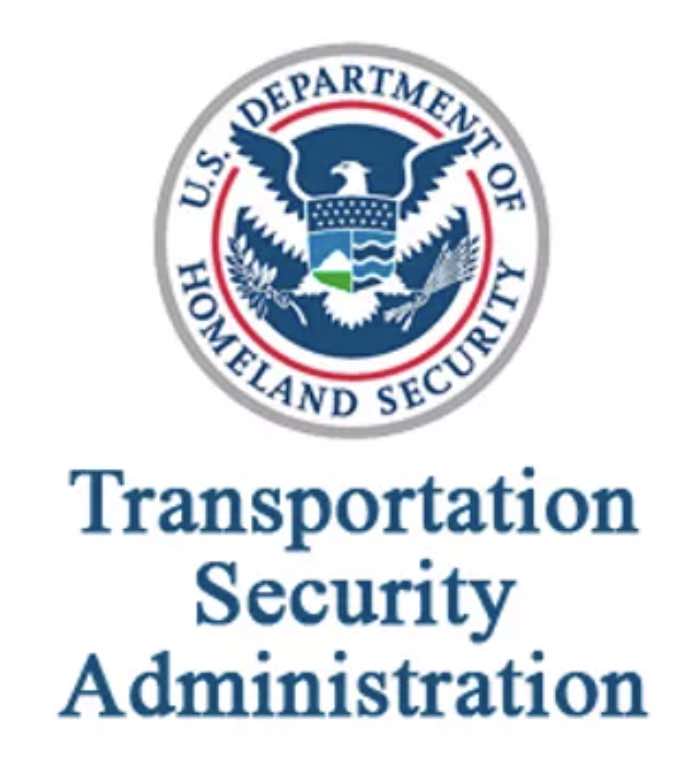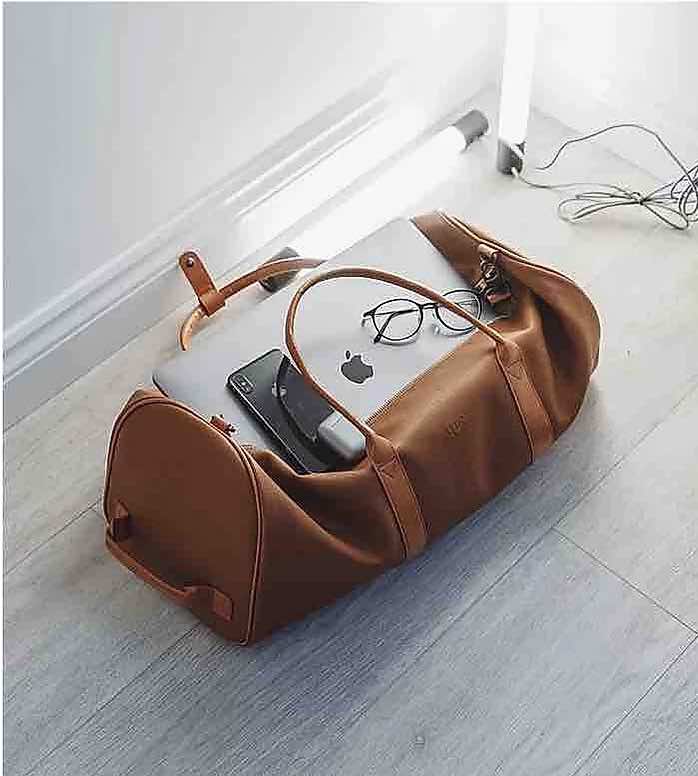by Daniel | Last Updated December 13th, 2021

We may earn a commission for purchases using our links, at no cost to you.
Your One-Stop Guide to Flying With a Laptop
Without a doubt, this question has been on the minds of travelers since the laptop became popular. The Transportation Security Administration (TSA) is particular about electronics travelers may carry on their person, and this includes laptops. Instead of getting frustrated and confused about carry-on guidelines in accordance with laptops, read this guide to start your trip off on the right foot.
You should not have any issues as long as you follow all the necessary security protocols. In this quick guide, we will teach you everything you need to know about flying with a laptop. We’ll start by getting you through the preparation period, followed by recommended tips and tricks for making your travel experience the best it can be.
What You Need to Know Before You Go
Every country has specific regulations that may prevent a laptop from being stored in carry-on luggage. For instance, in 2017, the U.S. Department of Homeland Security banned travelers from carrying laptops on their person during flights departing from certain airports in Africa and the Middle East. This ban has now expired. However, TSA still takes hidden explosives in laptops very seriously.
For this reason, there are laptop screening rules put in place on and off the plane. Contact your local airport or the airline that you frequently fly with if you have any specific questions.
Airline
Don’t book your airline ticket before you’ve read all the information pertinent to bringing electronics on board. The carry-on size limits vary slightly for every airline. Some airlines might only allow small backpacks, while others allow for smaller suitcases as well.
You’ll also want to read up on how many carry-on bags you can bring with you. Most airlines follow the same guidelines of one carry-on and one personal item. However, many airlines are now charging individuals for carry-ons. The smartest plan of action is to place your laptop in your personal bag, so you don’t risk having to check the technology at the boarding desk.
Transportation Security Administration

TSA knows that a lot of people bring their laptops while they travel. The rules aren’t extreme, nor are they unbearable. Preparation is key. Before entering the security line, take your computer out of your personal bag. The security requires you to keep your laptop in a separate x-ray box from the rest of your luggage.
You don’t need to take your computer out of its casing during screening, so long as it is alone in the tray. The TSA website has specifics on how you should organize your bag if you are unsure about things.
International Flights

For those traveling from America, the State Department website is a go-to before leaving. The site lists all travel warnings either on their site or on their Twitter/Facebook. There is also the United States Customs and Border Protection website. This site offers a before-you-go section that will let you check the local customs rules of foreign countries.
You can also go directly to the foreign airport websites to check on the requirements for bringing your laptop. Most countries follow the same rules as the United States, but it’s better to be safe than sorry.
Checking in Luggage
In situations where you need to check your PC, try to make it as secure as possible. Wrap and seal your device with a protective material like bubble wrap before you pack it. The padding will help your laptop survive the rough airport treatment and alert you to any potential tampering when you arrive.
Place your computer squarely in the middle of your checked luggage. Try to wrap it in clothes and other soft materials for added protection. If you are bringing multiple checked bags, put your PC in the bag that is not holding any liquids to prevent potential damage.
Traveling: Practical Tips
Have you digested all the airport tricks from the previous section? After all that information, it’s time for some tips related more to the specific laptop you bring with you.
Every brand of PC is unique, and some will be better suited to traveling than others. We aren’t here to sell you on a specific seller or convert you from Mac to Google. We’ll cover the basics, and it’s up to you to do a deep dive. So, let’s get started.
Packing

How should I pack my laptop? The question will have a specific answer depending on the person. In most cases, it’s best to pack your PC in your personal bag in a unique laptop case. Stay away from putting the computer in your luggage, but if you need to follow the steps we covered in the checking section of the article.
As for specific cases, go for something simple. Try to toe the line between stylish and practical. Don’t show off too much you don’t want your laptop to get stolen. A solid color case with a soft interior is a solid bet in terms of keeping the insides from getting too knocked around. Something too stiff can cause more damage.
Onboard WiFi
After getting your laptop on the plane, whether in your bag or your carry-on, should you use it? A loaded question. If you are working on your trip, onboard WiFi might be necessary. Maybe you need to take a call, or you have to respond to an email? In those cases, buy the WiFi. It’ll be a bit expensive, but you’ll be working.
Remember to listen to the rules of the pilot and flight attendants if you choose to use your laptop during the flight. Don’t whip out the machine as soon as you sit down, you’ll need to wait. They will usually make an announcement when you can start using the WiFi. When the flight is landing, turn off and store your PC. Make sure that you disconnect from the WiFi before you put everything away.
If you’re not intending to work, don’t buy the WiFi as it won’t be worth it. You can survive by downloading movies, podcasts, or a lot of music onto your device. If possible, take a nap to adjust to whatever time zone change you’ll experience.
Accessories
Bringing your laptop might already seem like a lot, but you also have to think about the accessories. Not just the case, but also the charger, surge protector, and adapters if necessary. If you forget your charger, you can always buy one in the country or place you’re going. In that case, you don’t need to worry about the adapter either.
Look at the voltage, plug, and socket of the country that you’re going to. In some cases, like domestic flights, you can get away with the same charger. International flights will vary. Japan, Korea, and China, for example, all have unique plugs that require you to purchase adaptors.
You’ll also want to look at the specs on your laptop. In some cases, a surge protector will keep your PC from shorting out when you try to plug it in. Some computers can only handle a specific amount of voltage, usually the manufacturing country standard.
Is Your Laptop a Carry On?
The short answer is yes, it is. Your laptop falls under the carry-on item category. You can bring it in your bag without any problems, as long as you follow the TSA and airline rules about usage and storage.
